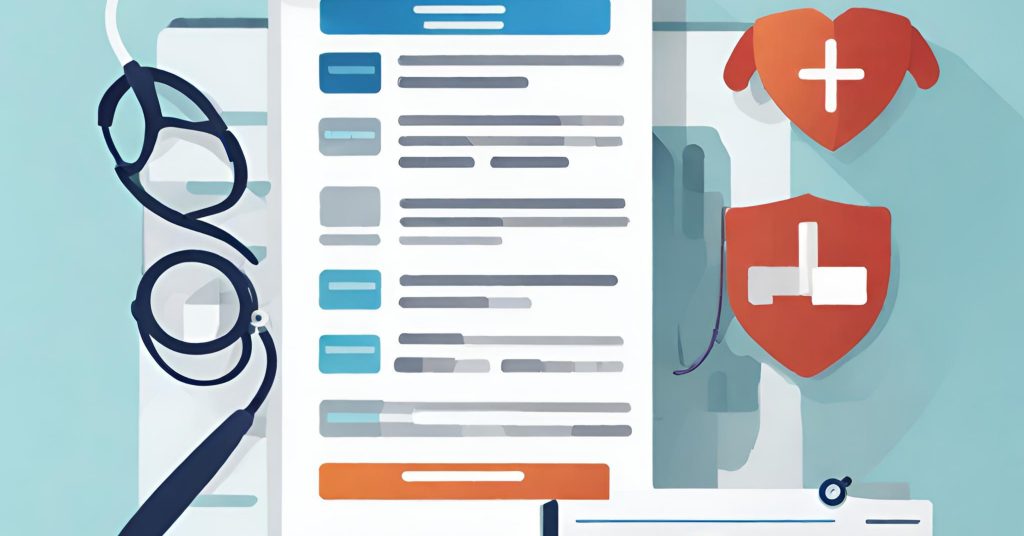
In the intricate web of healthcare management, medical billing practices can be impacted by legal issue. It stands as a vital cornerstone, ensuring that healthcare providers are compensated for their services while patients receive accurate and fair bills. However, this essential process is not without its challenges, especially when legal issues come into play. In this article, we will explore the various ways in which legal matters can significantly impact medical billing practices and how healthcare providers can navigate these complexities.
1.Compliance and Regulations:
One of the primary ways legal issues impact medical billing is through compliance and regulations. Healthcare providers must adhere to a myriad of laws, such as the Health Insurance Portability and Accountability Act (HIPAA) and the Affordable Care Act (ACA). Failure to comply with these regulations can result in hefty fines and legal consequences, directly affecting a provider’s revenue stream.
Here’s a closer look at how compliance and regulations impact medical billing practices:
HIPAA Compliance:
The Health Insurance Portability and Accountability Act (HIPAA) sets the standard for protecting sensitive patient data. Medical billing professionals must comply with HIPAA regulations to safeguard patient privacy. Failure to do so can result in severe penalties, making it imperative for providers to implement stringent data security measures and ensure the confidentiality of patient information.
ICD and CPT Coding Guidelines:
Medical coding is governed by the International Classification of Diseases (ICD) and Current Procedural Terminology (CPT) codes. These codes ensure uniformity and accuracy in describing medical services and diagnoses. Billing staff must stay updated with the latest coding guidelines to prevent errors, claim denials, and legal issues related to incorrect coding practices.
Anti-Kickback and Stark Laws:
The Anti-Kickback Statute and Stark Law are designed to prevent fraudulent practices in healthcare, such as offering or accepting bribes for patient referrals. Medical billing practices must comply with these laws to maintain the integrity of financial relationships within the healthcare industry. Violations can lead to significant fines and legal consequences.
Medicare and Medicaid Regulations:
Providers offering services to Medicare and Medicaid beneficiaries must adhere to specific regulations outlined by these government programs. Billing errors or fraudulent claims related to these services can result in audits, repayments, and legal actions. It’s crucial for medical billing professionals to understand and comply with the unique requirements of these programs.
2. Fraud and Abuse:

Medical billing fraud and abuse are significant concerns within the healthcare industry. Practices like upcoding, unbundling, and billing for unnecessary services can lead to legal repercussions. To mitigate this risk, medical billing professionals must stay updated on coding guidelines and ensure accuracy and transparency in their billing practices.
Understanding Medical Billing Fraud and Abuse:
Medical billing fraud involves intentional deception to secure unauthorized benefits, while abuse refers to practices that are inconsistent with sound fiscal, business, or medical practices. Both fraud and abuse result in inflated healthcare costs, making it imperative to address these issues promptly.
Impact on Healthcare Providers:
Providers engaging in fraudulent or abusive billing practices risk facing legal actions, hefty fines, and damage to their reputation. Moreover, fraudulent claims can lead to audits, repayment demands, and exclusion from government healthcare programs, severely impacting a provider’s revenue stream.
Impact on Payers and Patients:
Payers, including insurance companies and government programs, bear the financial burden of fraudulent claims, leading to increased premiums and reduced coverage options for patients. Moreover, patients may receive bills for services they never received, causing confusion and eroding trust in the healthcare system.
Preventing Fraud and Abuse:
- Robust Compliance Programs: Healthcare providers must establish comprehensive compliance programs that educate staff about fraudulent billing practices and emphasize adherence to ethical standards and regulations.
- Regular Audits and Monitoring: Conducting regular internal audits and implementing advanced billing software can help identify irregularities in claims, ensuring accuracy and compliance with coding guidelines.
- Staff Training: Continuous training for billing and coding staff is crucial to keep them updated on the latest regulations and coding guidelines, reducing the likelihood of unintentional errors.
3.Insurance Denials and Appeals:

Legal issues can also arise when insurance companies deny claims or delay payments. Providers often have to navigate complex appeal processes, which can be time-consuming and financially draining. Legal expertise is crucial to challenge unjust denials and ensure healthcare providers receive rightful compensation for their services.
Common Causes of Insurance Denials:
Insurance denials can occur due to various reasons, including coding errors, lack of preauthorization, inaccurate patient information, and non-covered services. Identifying the root cause of denials is essential for preventing similar issues in the future.
Impact on Healthcare Providers:
Denied claims not only delay payments but also increase administrative costs associated with reprocessing claims and appeals. Prolonged denial resolution can strain the cash flow of medical practices, affecting their ability to provide quality patient care.
Strategies for Successful Appeals:
- Thorough Documentation: Comprehensive and accurate documentation of patient records, services provided, and medical necessity is essential for a successful appeal. Clear and detailed records strengthen the case for claim approval.
4. Billing for Telemedicine Services:
With the rise of telemedicine, legal complexities have emerged regarding billing for virtual consultations. State laws vary regarding telemedicine reimbursement, and providers must navigate these intricacies to avoid legal challenges. Clear communication with patients about billing procedures for telemedicine services is essential to prevent disputes.
Understanding Telemedicine Services:
Telemedicine encompasses a broad range of virtual healthcare services, including video consultations, remote monitoring, and telephonic visits. Billing for these services requires a clear understanding of the type of service provided and the applicable billing codes.
Reimbursement Policies and Payer Guidelines:
Different insurance payers have varying reimbursement policies for telemedicine services. It’s essential for healthcare providers to familiarize themselves with these guidelines, including eligible services, covered codes, and documentation requirements. Regularly checking payer websites and updates helps stay informed about the latest changes in reimbursement policies.
Eligible Telemedicine Services:
Not all healthcare services are eligible for telemedicine billing. Payers typically cover services that are medically necessary and can be appropriately delivered through telemedicine. Understanding which services can be provided remotely and documenting medical necessity is crucial for successful reimbursement.
Appropriate Coding and Documentation:
Accurate coding is paramount in telemedicine billing. Healthcare providers must use the correct Current Procedural Terminology (CPT) and Healthcare Common Procedure Coding System (HCPCS) codes for telemedicine services. Additionally, detailed documentation of the virtual visit, including patient history, examination findings, and treatment plans, supports the billed services and aids in potential audits.
5. Patient Privacy and Data Security:

Protecting patient privacy and data security is paramount in medical billing. Legal issues can arise if patient information is compromised due to a data breach. Healthcare providers must invest in robust cybersecurity measures and stay compliant with data protection laws to prevent legal consequences and maintain patient trust.
The Significance of Patient Privacy:
Patient privacy is a fundamental right. It ensures that individuals can share their medical information with healthcare providers without fear of unauthorized disclosure. Respecting patient privacy builds trust between patients and healthcare providers, encouraging open communication and better healthcare outcomes.
Challenges in Patient Data Security:
The healthcare industry faces unique challenges in safeguarding patient data. Cyberattacks, data breaches, and unauthorized access to electronic records are constant threats. Additionally, the evolving landscape of regulations, such as the Health Insurance Portability and Accountability Act (HIPAA), adds complexity to ensuring compliance and data security.
HIPAA Compliance:
HIPAA sets the standard for protecting sensitive patient data. Healthcare providers, health plans, and business associates must comply with HIPAA regulations, which include implementing security measures, conducting risk assessments, and training staff to handle patient information securely. Non-compliance can result in severe penalties.
Secure Electronic Health Records (EHRs):
Implementing secure EHR systems with robust access controls is essential. Healthcare providers should restrict access to patient records based on job roles and responsibilities. Regular audits of EHR access logs help identify and prevent unauthorized access.
Encryption and Secure Communication:
Encrypting patient data both at rest and in transit adds an extra layer of security. Secure communication channels, especially in telemedicine and email correspondence, prevent eavesdropping and protect patient information from interception by malicious entities.
6.Medical Malpractice Claims:

Medical billing practices can also be impacted by medical malpractice claims. If a healthcare provider is sued for malpractice, billing records and practices may come under scrutiny. Proper documentation and adherence to legal standards are essential to defend against such claims.
Common Causes of Medical Malpractice Claims:
Medical malpractice claims can stem from various factors, including misdiagnosis, surgical errors, medication mistakes, birth injuries, and lack of informed consent. In some cases, these errors occur due to negligence, lack of communication, or mismanagement of patient records. Identifying these causes is vital for both prevention and resolution.
Impact of Medical Malpractice Claims:
For healthcare providers, these claims can lead to increased insurance premiums, damage to professional reputation, emotional stress, and legal expenses. For patients, it can result in prolonged suffering, financial burdens due to additional medical expenses, and a loss of trust in the healthcare system. Addressing the impact on both parties is crucial for a fair resolution.
Preventive Measures:
- Effective Communication: Ensuring clear, honest, and empathetic communication with patients can prevent misunderstandings and dissatisfaction. Providers must explain medical procedures, risks, and potential outcomes thoroughly.
- Thorough Documentation: Accurate and detailed patient records are essential. Comprehensive documentation of patient history, treatment plans, and informed consent discussions provides crucial evidence in case of a claim.
- Continued Education: Healthcare professionals must engage in continuous education to stay updated with the latest medical practices, technologies, and legal regulations. Ongoing training helps in reducing errors and improving patient care.
- Quality Improvement Programs: Implementing quality improvement initiatives within healthcare facilities encourages regular assessments of processes and outcomes. Identifying areas for improvement and addressing them proactively can prevent future incidents.
In conclusion
The landscape of medical billing is intricate and constantly evolving, with legal issues posing significant challenges. Healthcare providers must invest in legal expertise and stay informed about changing regulations to navigate these complexities successfully. By ensuring compliance, accuracy, and transparency, healthcare providers can safeguard their revenue streams, maintain patient trust, and provide quality care while adhering to legal standards.